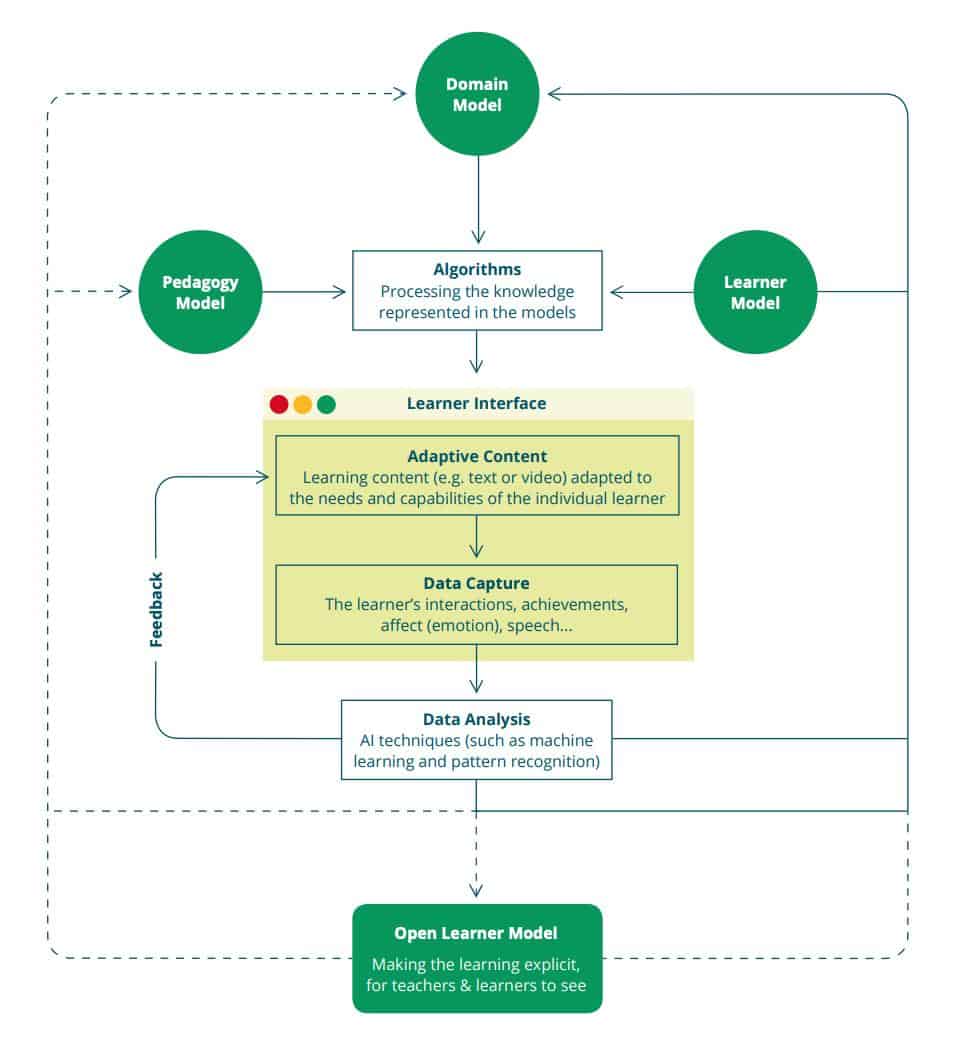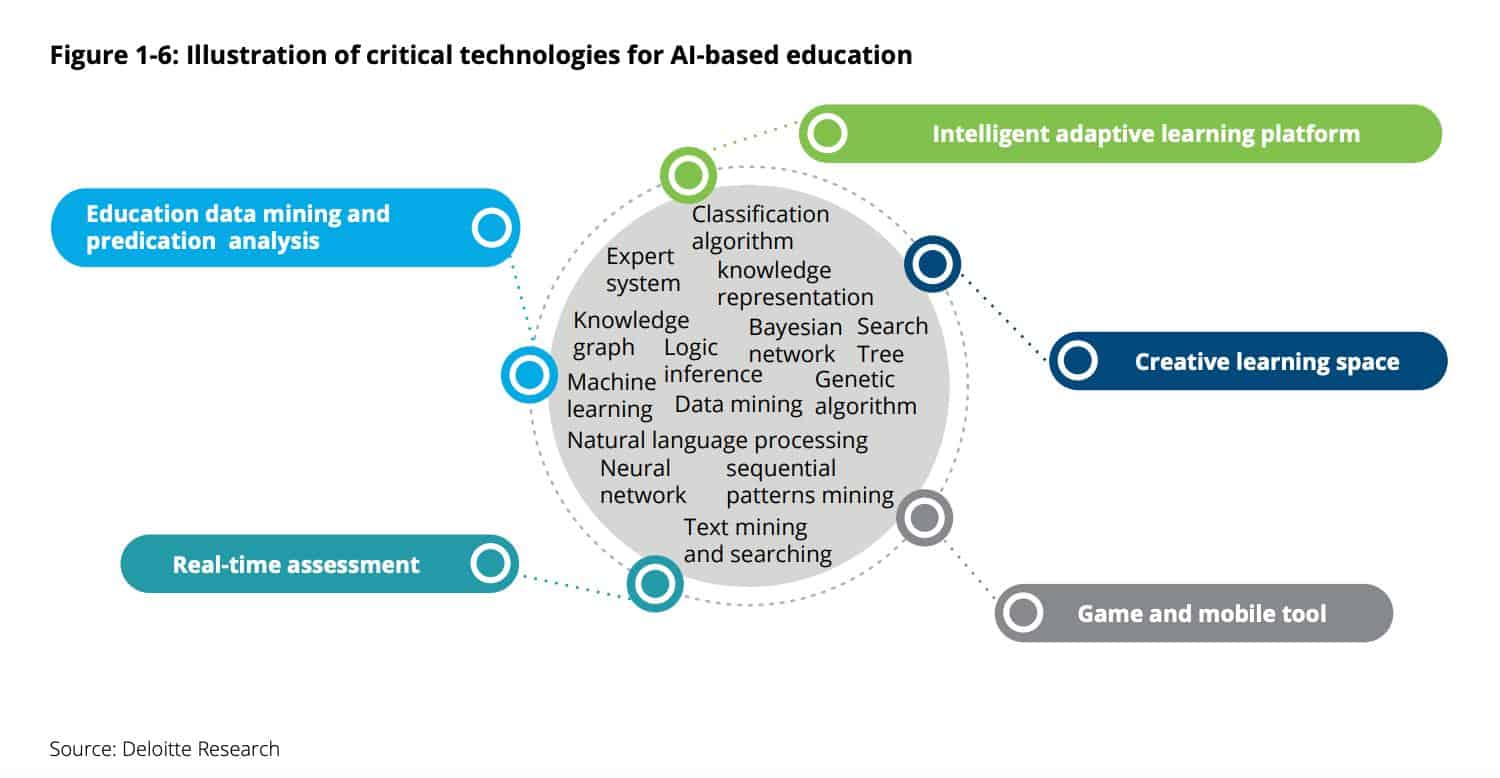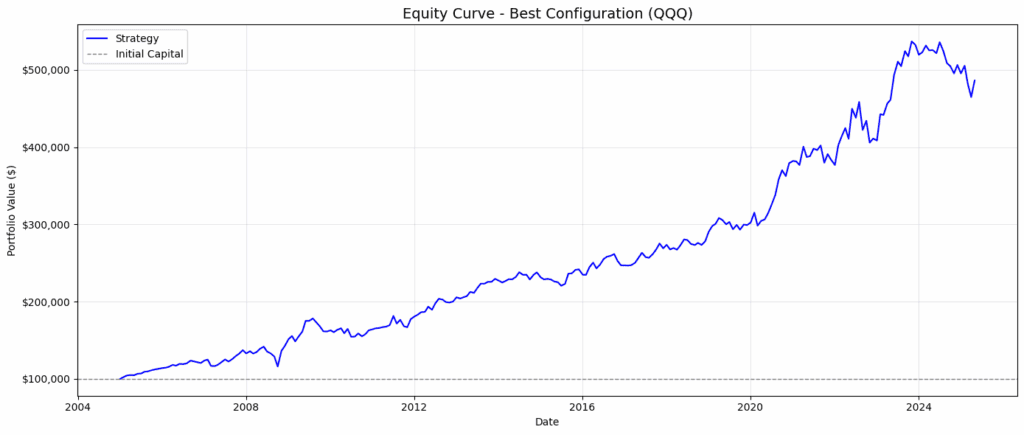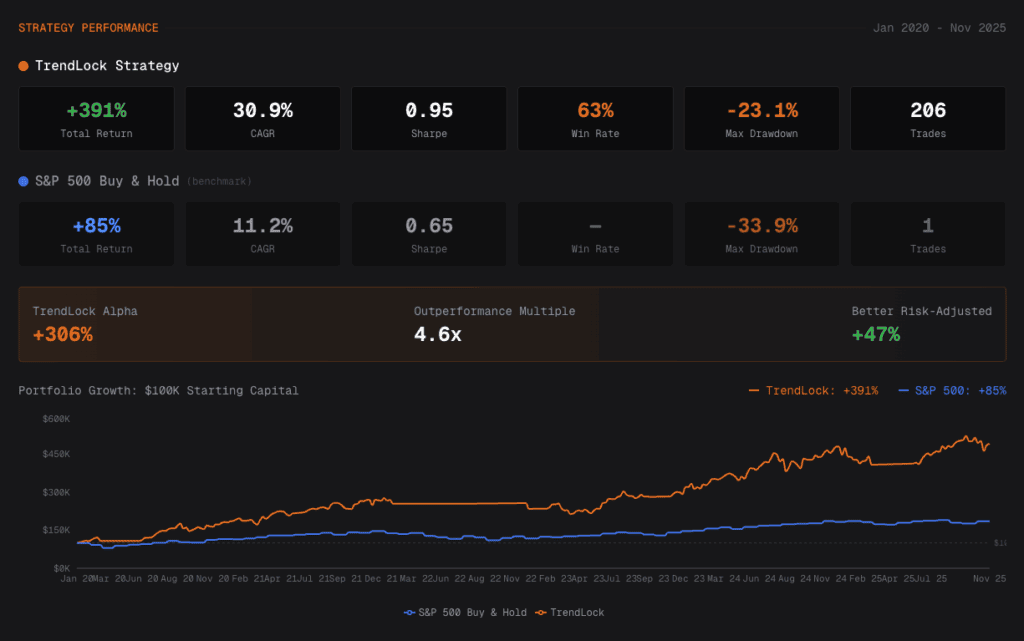“Teaching is the only major occupation…for which we have not developed tools that make an average person capable of competence and performance. In teaching, we rely on the naturals, the ones who somehow know how to teach.” ― Peter Drucker
The act of teaching is an amazing feat. Read the above quote again. In its current form, the entire educational system hinges on finding the few people that “somehow know how to teach.” That’s not Taleb’s definition of Antifragile by any stretch.
Yet what if AI could change that? What if AI offered anyone the tools needed to teach others. Or the power to learn faster with longer retention. How much greater would we be as a society? Jordan Peterson once said something like (I’m paraphrasing), “We don’t really know the extent to which humans can achieve things.” Imagine if we had better tools to teach more people to learn better!
Last week we discussed what makes a great AI company and how you can find industries to fish for interesting AI ideas. You can read that here.
This week we shift our focus to the education space. By the end of this essay we’ll answer three key questions:
-
- What Makes AI Education Companies Different?
- Who Are The Big Players In The Industry?
- How Can We (Directly) Invest in AI Education?
But before we dive in, it’s important to reiterate what we’re seeking. We want to invest in companies with defensible datasets that provide a unique moat that competition can’t replicate.
In turn, this data solves a real problem for its customers. We don’t want AI for AI’s sake. We want wide-moat companies solving problems with data their competitors can’t copy.
What Makes AI Education Companies Different?
The purpose of AI in Education (according to Pearson): “the scientific goal to “make computationally precise and explicit forms of educational, psychological and social knowledge which are often left implicit.”
This brings us to our first wrinkle for AI applications in Education. Education isn’t as binary as, say, Finance or Retail. In short, AI in Education tries to make explicit predictions from Implicit data.
Pearson, the world’s largest education and book publisher in the world, expands on this idea of explicit vs. Implicit (emphasis mine):
“In other words, in addition to being the engine behind much ‘smart’ ed tech, AIEd is also a powerful tool to open up what is sometimes called the ‘black box of learning,’ giving us deeper, and more fine-grained understandings of how learning actually happens (for example, how it is influenced by the learner’s socio-economic and physical context, or by technology).”
Good AI Education companies master three models:
-
- Pedagogical Model: Ability to model effective teaching approaches
- Domain Model: The subject itself being learned
- Learner Model: The student learning
AI Education companies need to solve something other AI companies don’t: How to show the model so that the subject learns as well as the model itself. In other words, it’s not enough to optimize how the algorithm learns. AI Education companies must optimize for how each student learns.
These issues matter in two models: Pedagogical and Learner. Pearson explains what AI models must do in each model. Pedagogical models for example must grapple with the following issues:
-
- Productive Failure: The idea that an AI model should let the students fail many times before showing the correct answer.
- Feedback: Questions, hints or haptics to help students reach the correct answer without heavy intervention
- General Assessment to inform and measure learning (not as easy as it sounds)
On the other hand, learners (or students) using AI education technology deal with other issues like:
-
- How to structure an argument
- Different approaches to reading
- Basic math skills
Finally, AI Education models must adapt to the learner model, which includes:
-
- The student’s previous achievements and difficulties
- The student’s emotional state
- Student’s engagement level (time on task, etc.)
Let’s look at how the AI Education model works on a granular level.
The AI Education Model Breakdown
Like most AI software, AI Education algorithms benefit from the virtuous data cycle. I’ll let Pearson explain its impact on Education AI (emphasis mine):
“One of the advantages of adaptive AIEd systems is that they typically gather large amounts of data, which, in a virtuous circle, can then be computed to dynamically improve the pedagogy and domain models. This process helps inform new ways to provide more efficient, personalized, and contextualized support, while also testing and refining our understanding of the processes of teaching and learning.”
This virtuous cycle creates Data Dominance between the student, the teacher, and how the program teaches the students. Again, the first-mover advantage is huge here. The AI algorithm that’s taught the most students will have the most data.
This will lead to an optimized level of displaying the learning material. Which in turn helps the teacher teach better. Which leads to increased learning from students. This leads to more data about how students progress. Which leads to better data on how to teach. And the chorus repeats (as seen on the chart below).
 The cycle reverts to the three basic models of AI Education: pedagogical, domain, and learner. Pearson explains how AI implements each model to improve the one model that matters most, the learner (emphasis mine):
The cycle reverts to the three basic models of AI Education: pedagogical, domain, and learner. Pearson explains how AI implements each model to improve the one model that matters most, the learner (emphasis mine):
“Deep analysis of the student’s interactions is also used to update the learner model; more accurate estimates of the student’s current state (their understanding and motivation, for example) ensures that each student’s learning experience is tailored to their capabilities and needs, and effectively supports their learning.”
We’re seeing this implemented a few ways:
Intelligent Tutoring System (ITS): One-on-one personalized AI-based tutoring. The AI program learns how the student learns and what they’re struggling with and optimizes their learning experience. All this is done without a human teacher.
Intelligent Virtual Agents (IVA): AI-based virtual assistants that help a student solve a problem or question. Think of a friendly teammate in a Call of Duty video game. While most IVAs feel heavily scripted, future AI-based assistants will enjoy a more normal, collegial tone with the student. There’s a great research paper on this which you can read here. One of my favorite quotes from it is (emphasis mine):
“In contrast, we envision virtual agents that cohabit virtual worlds with people and support face-to-face dialogues situated in those worlds, serving as guides, mentors, and teammates. We call this new generation of computer characters animated pedagogical agents.”
Intelligent Virtual Reality (IVR): IVR has the power to transform classrooms like no other AI-based technology. Through immersive learning experiences, students can now travel through their history lessons. Age of Awareness put it this way (emphasis mine):
“Educators have used VR tools to create recreations of historic sites and engage learners in subjects such as economics, literature, and history as well. Learners may receive transformative experiences through different interactive resources.”
I know I sound like a broken record when it comes to defining the benefits of AI. But a solid comprehension of the underlying mechanisms allows us to spot companies solving real problems and companies adding “AI” to their name for a share price bump. This is especially true in education given the three esoteric models and implicit-to-explicit data wrangling.
Now we’re out of the weeds and into the application. Let’s shift our focus to the major players in the AI Education space.
The Big Four of AI Education
Diana Yin wrote a great Medium article on AI in Education. In it she highlights four major players:
-
- Tech Giants
- Educational Giants
- EdTech Startups
- Higher-Ed & Research Institutes
These players dictate where we look for investment ideas in this space. And if we want to know where to invest, we should learn about each of these major players.
Tech Giants
As you guessed, Tech Giants involve the leading (and largest) technology companies from around the world. That’s Google (GOOGL), Microsoft (MSFT), Apple (AAPL) and Baidu (BIDU).
These companies aren’t 100% focused on EdTech. But what they lack in focus they make up in capital and labor force. Each of these companies has near-unlimited capital to throw at AI Education ideas. Google has Google AI Education libraries. Microsoft has an AI school. Not to mention the legions of MIT graduates eager to put their skills to work.
Tech Giants face an issue. Their AI Education ventures might work. But any success won’t likely move the needle. Another thing to consider is companies like GOOGL and MSFT are happy to spend money on EdTech moonshots where profitability isn’t a goal.
Educational Giants
Educational Giants dominate the learning landscape. The list includes companies like Cengage (CNGO), McGraw Hill, Pearson (PSON) and Education Elements.
These companies are transforming from pure-play educational products/services to digital platforms.
The article notes a few changes like PSON’s new AI department, Knewton’s alta, and Duolingo’s new AI research group. Yang admits that while educational giants lack the technological knowledge, these companies sit on goldmines of data.
In effect, educational giants are doing what great AI companies do: create defensible datasets. The company with the largest database of homework problems will win in the race for the best AI-based homework platform.
PSON or CNGO could find ways to leverage their existing database of education content and incorporate AI-based education tools into their platform. That alone could change the margin profile and market multiple of the company.
EdTech Startups
EdTech startups have a lot going against them:
-
- Lack of sufficient funding
- No well-established industry position
- Smaller pools of talent
Yet what they lack in funding, size, and talent they make up with an obsessive company mission: to make the best AI  education product possible. A few examples of EdTech startups include Cognii, Squirrel AI and Alef.
education product possible. A few examples of EdTech startups include Cognii, Squirrel AI and Alef.
Cognii is a leading provider of AI-based educational technologies like virtual learning/teaching assistants. Squirrel AI is the first AI-powered adaptive education provider in China. The company’s also led by Tom Mitchell. You know, the world-renowned machine learning luminary. Not bad having him as your Chief AI officer.
To get a sense of how fast these EdTech startups can grow, look no further than Alef. The company prides itself on its Alef Platform, a service that helps students learn at their own pace through AI-based engagement learning modules.
The Arab-based company started 2016 with 8 students on its platform. Today it has over 121,000. That’s an increase of 15,124x. Not bad!
Higher Education & Research Institutes
The weakest of the four, Higher Ed and Research Institutes are plowing money into AI. MIT committed $1B in 2018 to build an AI college. Harvard established the AI Initiative. There are also myriad AI campuses abroad like Alan Turing Institute and Oxford Artificial Intelligence Society (OAIS).
Here’s why this is the weakest of the four: Big tech is stealing top AI teaching talent from universities and research institutes. Tech poaching from GOOGL, BIDU, and FB have devastating trickle-down effects. A NY Times article reveals the exponential growth in professors leaving schools (emphasis mine):
“From 2004 to 2009, 26 university professors moved into industry. In 2018 alone, 41 professors made the move. The steep rise in departures over the last decade and a half indicates that the trend will continue.”
An AI professor exodus from higher education leads to a (not so) virtuous cycle. Fewer professors mean fewer AI graduates. Fewer AI graduates mean fewer AI start-ups. Fewer AI start-ups means more funding and technology in the hands of Big Tech. Back to the NYT article (emphasis mine):
“But at the universities the professors left, graduating students were less likely to create new A.I. companies. When they did, they attracted smaller amounts of funding, according to the study. The effect was most pronounced in the field of “deep learning,” a technology that has become a crucial part of new A.I. systems.
In time, the brain drain from academia could hamper innovation and growth across the economy, the study argued. “The knowledge transfer is lost, and because of that, so is innovation,” said Michael Gofman, a finance professor at the University of Rochester and one of the authors of the study.”
Poaching AI professors makes it tough to compete with the Tech Giants. Luckily to win at the AI game you don’t need the largest reserves or the strongest talent pool. You need the best data. The most defensible data. Remember, the technology and the algorithms are commodities. It’s the data that matters most.
Let’s look at companies using differentiated datasets to capture AI-based Education market share.
How To Invest In AI Education
There are two ways we can invest in AI-based Education: Direct and Indirect
Indirect examples of investment include GOOGL, MSFT, FB, BIDU and Nvidia (NVDA). These companies have exposure to AI-based education companies through various offshoot ventures. The downside of indirect investment is any AI-based Education successes won’t move the needle for these tech giants.
Direct investments offer higher payouts if AI-based Education wins. But also carries greater risk if it fails to gain market share and defeat competitors. That said, there’s a handful of interesting businesses that warrant deeper research:
-
- K12 (LRN)
- Chegg (CHGG)
- Pearson (PSON)
- Arco Platform (ARCE)
- New Oriental Education & Technology (EDU)
- China Online Education (COE)
We’re saving our top ideas with our Collective members over the coming months. These companies aren’t on the above list, but we’re very excited about their prospects!
If you want to learn more about the Collective and get access to our deep research reports, check us out here.
Conclusion
Learning’s greatest bottleneck isn’t teaching. It’s the assessment phase. In essence, AI can create a just-in-time (JIT) assessment cycle. Just-in-time assessment will revolutionize education the way Toyota shocked the auto manufacturer’s industry.
In fact, Education is the model industry when it comes to understanding the symbiotic relationship between humans and machines. AI will never replace teachers. Maybe that’s what the real world will look like once we adopt AI. I’ll leave you with this quote from Jay Richards, author of the book The Human Advantage: The Future of American Work in an Age of Smart Machines (emphasis mine):
“That’s exactly right because we tend to think of all this technology as replacing what we are doing. They replace only the old way of doing what we’re doing. True people who used to need private physical can get it online but people who didn’t use to be able to afford physical trainers can get it effectively free online. That’s because the technology allows that to happen. So rather than thinking of the technology as replacing us, think of it as sort of our extension in time and space, our entrepreneurial prostheses which extend ourselves and our creativity into different domains.”
Next week we’ll look at our fourth and final industry: Finance. See ya then!







